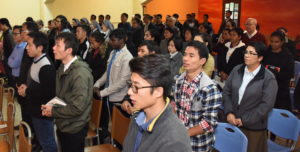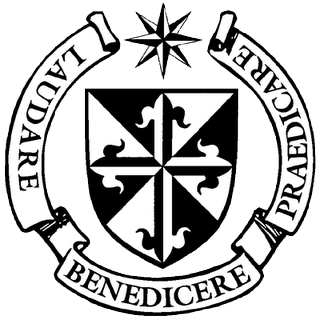Marian Devotion in relation to Lumen Gentium and Marialis Cultus

The lecturer, fr. Roland Mactal, introduced the Vatican II convoked in 1962 by Pope John XXIII, and closed by Pope Paul VI in the year 1965. Concerning Marian Devotion or Theology of Mary, he explains the two major themes “Aggiornamento†and “Ressourcementâ€. Aggiornamento means renewal or updating and Ressourcement means going back to the sources, here the sources will be the Scriptures.
Theology of Mary or Marian Devotion is mainly discussed in Vatican II Document Lumen Gentium, chapter eight. The lecturer explains the Parameters of Marian Theology. He introduces four parameters on the theology of Mary. Firstly, Mary as Theological Person which indicates Mary’s life and work as a mission expressed in Lumen Gentium, numbers 54 to 59.
Secondly, Mary as the Spiritual Subject, in which Mary is considered as one of us who experiences what we experience. In other words, that is the Process of Individuation. This concept is expressed in Lumen Gentium, numbers 66 to 67.
The third parameter is Concrete Universal in which Mary is presented as Model, Archetype or Exemplar of the Church. This typology reveals the relation between Mary and the Church. This parameter is taken from Lumen Gentium, numbers 60 to 65.
The last parameter presents Mary as Historical Subject. This parameter concerns the Anthropological and cultural identity of Mary, regarding the questions of who Mary is and where she is from. This parameter leads us to understand that Mary is an anawim, which means she is a poor of YHWH. This parameter can be found in Lumen Gentium, numbers 52 to 53.

Another concept that the Lecturer discussed was Mary as Mediatrix. The Mediatrix is attributed to Mary only as a title. However, many people have been proposing it to become a dogma. He continues to explain that there are some opposite ideas on this issue. Some propose that Jesus Christ is the Only Mediator, quoting the Letter of St. Paul to Timothy 2:5-6.
The counterpart explanation of this is that the mediation of Jesus is unique and ontological and cannot be replaced. The mediation of Mary is intercessory and dynamic. Mary’s mediation is through intercession, because she participates in the life of Jesus Christ. It does not obscure or diminishes the unique mediation of Christ, rather shows His power. (L.G. # 60) Because of the superabundance of merits she received from Christ, she is the Mediatrix. Lumen Gentium, number 62 entitles Mary as “Advocate, Auxiliatrix, Benefactressâ€.
Concerning the Apostolic Exhortation Marialis Cultus of Pope Paul VI, the lecturer explains the role of Marian devotion in relation to the Liturgy. The Liturgy is the official public prayer of the Church. The Vatican II emphasizes to restore and enhance the Liturgy by active and fruitful participation of the faithful in it.
Marialis Cultus expresses in terms of renewal of private Marian devotion, such as the Rosary in relation to the Liturgy of the Eucharist and to the Liturgy of the Hours. Furthermore, in Marialis Cultus Marian teachings were the union of Mary with the mystery of Christ and the Church and the placement of Marian devotion in its right perspective.
Concerning Marian Devotion, Catholic veneration of the Mother of God has two aspects: Public (official) and Private (pious devotions and exercises). The Public Official Liturgical Prayers are the Holy Mass and the Liturgy of the Hours. Mary, the Mother of God, is commemorated in the daily celebration of the Eucharist. The Church has officially approved four solemnities, three feasts and nine memorials in honor of Mary within the Liturgical Year. Mary is featured in the liturgy in various ways such as Hymns, prayers and the readings.
As explained in Marialis Cultus, the Angelus and the Holy Rosary are the two exercises of piety, which are both biblically based. The substantial part of these devotions is primarily taken from the Gospel. The Angelus reminds us of the Paschal Mystery of Christ. The Holy Rosary which focusses on the salvific events of the life of Christ is called the Gospel prayer.
In Marialis Cultus, Pope Paul VI recognizes the Dominicans’ tradition on Holy Rosary as he mentions: “among these people special mention should be made of the sons of St. Dominic, by tradition the guardians and promoters of this very salutary practice, the praying of the Holy Rosary.†(43)
The lecturer concludes that “Marialis Cultus proposed Mary as model of the Church in divine worship, because she represents the Church at worship at its deepest level.â€
Francis Nge Nge, OP

